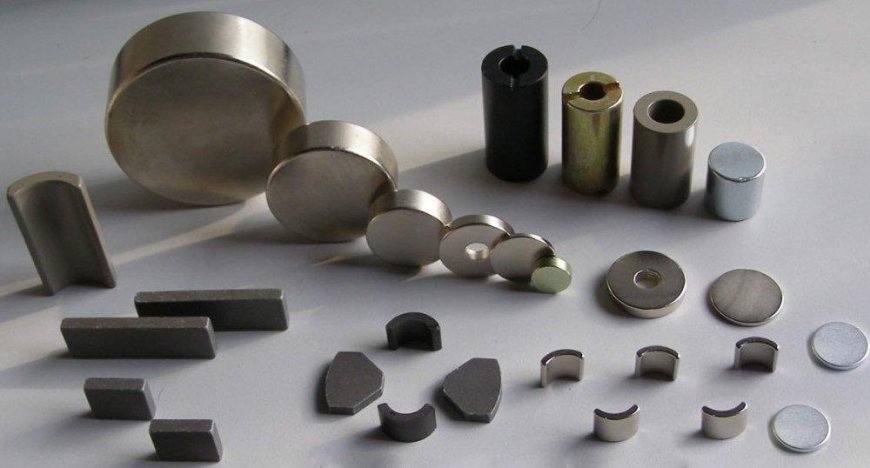Is this the end of ferrite magnets?
Ferrite Magnets are an extremely popular and still an inseparable element of many mechanisms and devices. We can find them in cheap cabinet

Magnets are an extremely popular and still an inseparable element of many mechanisms and devices. We will meet them in ... Ferrite Magnets are an extremely popular and still an inseparable element of many mechanisms and devices. We can find them in cheap cabinet locks - and in the most expensive audio systems. Without the magnetic field, it would be impossible to both process the sound and start the DC motors and stepper motors. However, if we take a closer look at their structure, we will notice a huge change in the selection of the magnets themselves: in older devices they will be ferrite magnets, but in newer devices we often encounter neodymium magnets. What is the reason for their popularity and does it mean that ferrite magnets will definitely disappear from the market?
Changing the guard in the magnet market
Ferrite magnets were a classic element of dynamic microphones, loudspeakers, and DC motors, used, among others, in for the production of RC models, toys and battery-powered devices. Currently, the vast majority of designers decide to use neodymium magnets in these structures. They are lighter and smaller than ferrite magnets, they also generate a magnetic field many times stronger. This makes them a more attractive alternative for device designers, allowing them to regain space in small housings and - at the same time - increasing the efficiency of the mechanisms themselves, while reducing their weight.
At first glance, you can distinguish these two types of magnets on the basis of their appearance - while ferrite magnets often have a matte, gray surface, popular neodymium are always offered in a shiny, smooth, metal coating. A big visual difference is also the shape and finish of the magnet's "housing" - ferrite ones are devoid of any additional elements, while neodymium ones may have additional handles, hooks or threads that facilitate mounting. Neodymium magnets are most often in the shape of cubes (so-called plate magnets), cylinders or rings, you can also find ball-shaped models - these are most often intended for entertainment purposes and are called magnetic blocks.
Must Read: Education “ Should Learners Be More Controlled and How?
How are neodymium magnets built?
The core is the central part of each neodymium magnet. Its production uses powder metallurgy - it is a technology in which powdered metals are compressed under the influence of high temperature and pressure and in the presence of a very strong magnetic field. During this process, the magnet can be easily shaped to the desired shape, while the metals themselves - most often neodymium, iron and boron - are permanently attached to each other. Despite the tight compression, the core remains quite brittle and chemically very reactive, and therefore not resistant to the external environment. For this reason, it is covered with a metal coating - most often made of neutral nickel.
Neodymium magnets in practice
Knowing the benefits of neodymium magnets makes it easier to select them for specific applications. It is worth remembering that the "strength" of the magnet, and therefore the intensity of the magnetic field it generates, is determined by the class. Strictly speaking, it describes the maximum energy product of the core material. the higher it is, the more powerful the magnet is.
In magnetic locks and latches (e.g. in cabinets, covers, containers), as well as in small mechanisms and proximity sensors, small cylindrical or plate magnets will work well. The latter are available in versions from 1 mm in thickness, so you can implement really miniature projects with them. If the magnet is to be permanently attached to the housing, it is worth choosing a variant with a hole, thread or - if the connection does not have to be so strong - at least with 3M adhesive tape. Elements equipped with hooks make it easier to attach, for example, decorative elements, and when attached to a rope, they are also used to search for lost objects made of metal. Always check the direction of magnetization before using a magnet.
